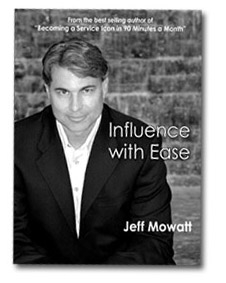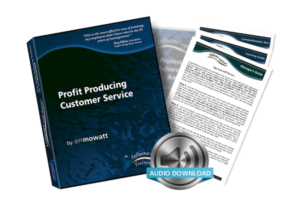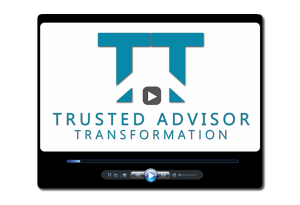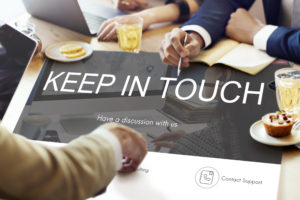Four Follow up Tips to Grow your Business
The Sales Manager didn’t hesitate when I asked her, “What’s one thing you think your team members could do more of to enhance their success with customers?” Her immediate response: “Follow-up.” Working with sales and service teams for over 25 years and observing the practices of the most successful team members, I’ve found this to be true. We often get so caught up in responding to customers and prospects, or hunting for new business, we neglect to pro-actively follow-up as thoroughly or consistently as we should. Ironically, following-up is one of the easiest and highest payoff activities we can do to grow our business. Often we don’t follow-up because we’re afraid of hearing a no. Other times we can’t think of a good excuse to stay in touch. Here are 4 tips I share in my seminars that will make follow up easier and more lucrative.
1. Customers Want Follow-up
Often sales reps are concerned that following-up with a potential customer after the first contact will come across as pushy. Keep in mind that customers responsible for making buying decisions are by definition, busy, successful people. Chances are they have lots on their plate and they may have been inadvertently putting your proposal on the back burner. They may already have you on their to-do list to contact for the next step. So, remember you’re not interrupting customers by following up; you’re being courteous and doing them a favour.
2. Electronic is Easy
If you’ve given the customer a price or proposal, they may have unfortunately opted to go with your competitor. So, they might not be receptive to your phone call because they’re afraid you may not take rejection well. Or that you’ll try to talk them out of their decision. That’s awkward for everyone. That’s why following-up electronically with an email or text will often get you a faster, more honest response. When sending an email, it’s still important to not come across as pushy. So state in your subject line that this is a “Courtesy Follow-up.” It reminds them that you are being conscientious and thorough. That builds trust. In the body of your message don’t just ask whether the person has taken some action or made a decision. That can sound blunt; almost like an accusation. Instead, ask if they’ve had a chance yet to take action. That wording comes across as polite and empathetic.
3. Be Better at Losing
If it turns out that the potential customer has indeed gone ahead with another supplier, then epitomize graciousness. In an upbeat tone let them that you’re pleased they are moving forward with their plans. If you know and respect the successful competitor, then mention that you’ve heard good things about that company. Here’s the kicker – finish by stating that if for any reason the other company isn’t able to deliver, or if the customer would like a backup in case of unforeseen issues, then to please keep you in mind. There are lots of reasons why customers choose different suppliers midstream. Being proactive, professional, and positive – even while not receiving the business -positions you at the top of the backup list when they decide to switch suppliers. You have nothing to lose by being gracious and everything to gain.
4. Out of sight – out of mind
Just because you did some business one time with a customer doesn’t necessarily mean they think of you or remember you. In reality, customers are more focused on their own businesses than they are on their suppliers. That’s why it’s so important to stay in contact. Forget the conventional ‘just checking in’ time wasters. Instead, provide them with regular tips that can help them to achieve their goals. You can do this via email, social media, or organizing professional development events for your customers and their team members. Add in some food, call it a lunch and learn, and they will remember you.
Bottom line – Interacting one time with a customer or prospect doesn’t mean you have a relationship. It means you had a transaction. Following-up proactively and regularly helps transform a transaction into a relationship. It proves you remember that person and are organized enough to stay in touch. That builds trust – a critical step towards positioning you as their Trusted Advisor.
Was this helpful? You’ll find more of Jeff’s Building Building Tips on Influence and Persuasion Skills
Or Other Items that may complement your interest:

Influence with Ease book – You already know that whatever your message, customers and coworkers are persuaded – not by your title – but by how much they trust you. Jeff shares 30-second tips that strengthen trust in virtually all of your communications.

Profit Producing Customer Service in today’s competitive marketplace your team’s customer service is often your greatest differentiator. The challenge is ensuring that everyone gets consistent training on how to deliver one-of-a-kind service, where price becomes less relevant. This training package reveals how employees can provide REMARKable service.

Trusted Advisor Transformation© on line video training – Jeff challenges conventional wisdom about customer service. He reveals real-world tips that get immediate results for reducing conflicts, strengthening customer & co-worker relationships, and enhancing your personal and corporate brand.
You can find more of Jeff’s training resources under Shop or should you be interested in having Jeff present a customized presentation for your organization contact Jeff at [email protected]


